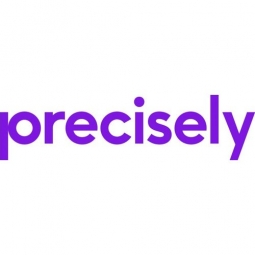公司规模
Large Corporate
地区
- America
国家
- United States
产品
- Precisely 360Data
- Data360 Govern
技术栈
- Oracle
- Cognos
- Bloomberg
- Factset
实施规模
- Enterprise-wide Deployment
影响指标
- Customer Satisfaction
- Digital Expertise
- Productivity Improvements
技术
- 平台即服务 (PaaS) - 数据管理平台
- 应用基础设施与中间件 - 数据交换与集成
适用行业
- 金融与保险
适用功能
- 商业运营
服务
- 软件设计与工程服务
- 系统集成
关于客户
The client is a leading U.S. mutual life insurer with more than 5 million customers and $32 billion in annual revenue. They offer a wide range of financial products and services, including insurance, annuities, retirement plans, and other employee benefits. As a Fortune 100 company, they have a significant presence in the financial services industry and are known for their comprehensive offerings that cater to both individual and corporate clients. The company has been in operation for nearly 30 years and has established itself as a trusted provider of life insurance and related financial services. Their commitment to quality and customer satisfaction is evident in their continuous efforts to optimize business processes and improve data governance. With a focus on innovation and efficiency, the company has embarked on various initiatives to enhance their data management capabilities, ensuring that they remain competitive in a rapidly evolving market. Their partnership with Precisely highlights their dedication to leveraging advanced data solutions to meet regulatory requirements and build greater confidence in the quality of their data.
挑战
Under the direction of the chief data officer (CDO), the company launched an aggressive plan to establish and implement data governance tools, policies and processes across the enterprise. The initial effort included the creation of business glossaries in spreadsheets to document metadata, data ownership, definitions and business attributes policies, in addition to the controls that were implemented as part of the data quality initiative. The company also had a critical need to understand data lineage across systems at a business level, which they managed in a spreadsheet tool integrated with Salesforce. These data governance efforts marked important steps to help both business and technical users better manage, understand and use data, but these largely manual solutions lacked the automation, adoption and sustainability needed from a long-term solution. The company still faced numerous challenges, including: Error-prone spreadsheets requiring constant manual attention to keep current, making collaboration and widespread contribution difficult. Technical metadata from key applications required the development of custom code solutions or had to be imported and catalogued manually. Technical data lineage made it nearly impossible for business users to understand or leverage. Usage rights and utilization for licensed data were hard to trace and account for. Policies and processes around data access, permissions and approvals lacked visibility and accountability across the enterprise. The client reached out to Precisely to help them overcome these challenges and achieve the automation, accountability and sustainability the company needed from a governance program.
解决方案
Precisely conducted numerous governance workshop sessions with the CDO and governance team to define an iterative governance working model that could be scaled out across the enterprise. According to the team, these data governance sessions were instrumental not just on selecting the correct tooling but to also leverage the skills sets, culture and transformations that were happening at the organization. The governance team indicated that there were several factors that set Precisely apart from the competition, including: Data360 Govern being a business-friendly platform, enabling a self-service approach for both business and IT users. The flexible, robust platform allows users to define, populate and measure various types of complex data assets including data transformations, aggregations and advanced formulas. The solution’s centralized, collaborative interface and workflow provided unprecedented visibility into updates and approvals for every stakeholder. Versatile key connectors automated import of technical metadata from Oracle, Bloomberg, Cognos and other core system applications. In the first phase of implementation, the customer and Precisely established an intuitive data catalog that provided an easily searchable common vocabulary for both business and IT resources to reference. Users can view technical and business-oriented metadata at a glance to learn critical information about the governed artifacts, including ownership, authoritative source, lineage and which data domains use the specific data item. To help business teams more easily understand data movement, the company augmented technical data lineage with easily configurable, visual business lineage. This gives business users the ability to view lineage and data movements at a level of abstraction that makes sense to them without getting caught in the more detailed technical minutiae. Given the importance of metrics in any data management program, Precisely provided out-of-the-box dashboards for qua
运营影响
数量效益

Case Study missing?
Start adding your own!
Register with your work email and create a new case study profile for your business.
相关案例.

Case Study
Real-time In-vehicle Monitoring
The telematic solution provides this vital premium-adjusting information. The solution also helps detect and deter vehicle or trailer theft – as soon as a theft occurs, monitoring personnel can alert the appropriate authorities, providing an exact location.“With more and more insurance companies and major fleet operators interested in monitoring driver behaviour on the grounds of road safety, efficient logistics and costs, the market for this type of device and associated e-business services is growing rapidly within Italy and the rest of Europe,” says Franco.“The insurance companies are especially interested in the pay-per-use and pay-as-you-drive applications while other organisations employ the technology for road user charging.”“One million vehicles in Italy currently carry such devices and forecasts indicate that the European market will increase tenfold by 2014.However, for our technology to work effectively, we needed a highly reliable wireless data network to carry the information between the vehicles and monitoring stations.”

Case Study
Safety First with Folksam
The competitiveness of the car insurance market is driving UBI growth as a means for insurance companies to differentiate their customer propositions as well as improving operational efficiency. An insurance model - usage-based insurance ("UBI") - offers possibilities for insurers to do more efficient market segmentation and accurate risk assessment and pricing. Insurers require an IoT solution for the purpose of data collection and performance analysis

Case Study
Smooth Transition to Energy Savings
The building was equipped with four end-of-life Trane water cooled chillers, located in the basement. Johnson Controls installed four York water cooled centrifugal chillers with unit mounted variable speed drives and a total installed cooling capacity of 6,8 MW. Each chiller has a capacity of 1,6 MW (variable to 1.9MW depending upon condenser water temperatures). Johnson Controls needed to design the equipment in such way that it would fit the dimensional constraints of the existing plant area and plant access route but also the specific performance requirements of the client. Morgan Stanley required the chiller plant to match the building load profile, turn down to match the low load requirement when needed and provide an improvement in the Energy Efficiency Ratio across the entire operating range. Other requirements were a reduction in the chiller noise level to improve the working environment in the plant room and a wide operating envelope coupled with intelligent controls to allow possible variation in both flow rate and temperature. The latter was needed to leverage increased capacity from a reduced number of machines during the different installation phases and allow future enhancement to a variable primary flow system.

Case Study
Automated Pallet Labeling Solution for SPR Packaging
SPR Packaging, an American supplier of packaging solutions, was in search of an automated pallet labeling solution that could meet their immediate and future needs. They aimed to equip their lines with automatic printer applicators, but also required a solution that could interface with their accounting software. The challenge was to find a system that could read a 2D code on pallets at the stretch wrapper, track the pallet, and flag any pallets with unread barcodes for inspection. The pallets could be single or double stacked, and the system needed to be able to differentiate between the two. SPR Packaging sought a system integrator with extensive experience in advanced printing and tracking solutions to provide a complete traceability system.

Case Study
Transforming insurance pricing while improving driver safety
The Internet of Things (IoT) is revolutionizing the car insurance industry on a scale not seen since the introduction of the car itself. For decades, premiums have been calculated using proxy-based risk assessment models and historical data. Today, a growing number of innovative companies such as Quebec-based Industrielle Alliance are moving to usage-based insurance (UBI) models, driven by the advancement of telematics technologies and smart tracking devices.
Case Study
Enhancing Security and Compliance in Remitly's Global Money Transfer Service with Fastly
Remitly, an online remittance service, was faced with the challenge of securing its proprietary global transfer network. The company needed a security solution that could meet PCI requirements and protect customers' sensitive transactions through its mobile application. The solution had to be capable of defending against new and emerging attack types without impacting performance. Remitly also had to deal with irregular traffic patterns, such as a sudden spike in account transfers from a small network segment on the Pacific coastline of South America. The company needed to determine in real time whether such traffic indicated an attack or valid requests. A traditional web application firewall (WAF) would not be able to distinguish this traffic, potentially leading to customer frustration if the IP was blacklisted.







